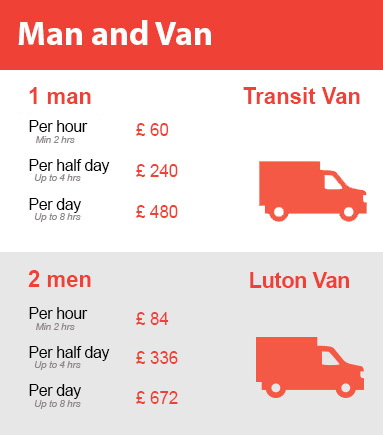Smart Approaches to Transporting Your Bed and Mattress
Posted on 23/06/2025
Smart Approaches to Transporting Your Bed and Mattress
Moving to a new home can often feel like a monumental task, especially when it comes to dealing with large and unwieldy items such as beds and mattresses. Whether you're relocating across town or making a cross-country journey, finding smart ways to transport your bed and mattress is essential for a seamless, stress-free move. In this comprehensive guide, we will uncover the most effective strategies, best practices, and tips for transporting your bed and mattress safely and efficiently.

Understanding the Challenges of Moving Beds and Mattresses
Before diving into the specifics, it's crucial to recognize why beds and mattresses pose a unique challenge during relocation:
- Bulky and Heavy: Beds and mattresses are typically large, heavy, and often awkward to carry.
- Susceptible to Damage: Framework and delicate mattress materials can be easily damaged if not handled properly.
- Hygiene Concerns: Exposing your mattress to dirt and contaminants during a move can impact cleanliness and longevity.
- Assembly and Disassembly: Beds, especially platform or adjustable beds, may need to be dismantled and reassembled at your new destination.
Given these challenges, adopting a smart approach to transporting your bed and mattress is not just beneficial--it's necessary.
Preparing Your Mattress and Bed for Relocation
1. Clean and Pack Your Mattress Properly
One of the first steps is to make sure your mattress is clean and protected. Here's how:
- Vacuum Thoroughly: Remove dust, debris, and allergens from both sides of the mattress.
- Use a Mattress Bag: Invest in a heavy-duty mattress bag for moving. These are designed to guard against moisture, dust, and pests.
- Seal and Label: Secure the bag tightly using packing tape and clearly label it with your name and room for easy identification.
2. Disassemble Bed Frames Carefully
Modern bed frames often require disassembly before transport. Doing this smartly helps avoid loss or damage. Here's how:
- Take Pictures: Before disassembling, snap photos of your bed's construction. This will help you reassemble it correctly at your new place.
- Keep Hardware Together: Use resealable plastic bags for screws, bolts, and other small items. Label the bags and tape them securely to the bed frame or store them in a dedicated hardware box.
- Mark Parts: Use masking tape to mark connecting points and identify headboard, footboard, and slats. This makes reassembly much faster.
Choosing the Best Transport Options
1. Hiring Professional Movers
Professional movers are often the safest and most convenient way to move your bed and mattress, especially for long-distance relocations. The advantages include:
- Experience: They have the know-how to handle large, heavy furniture safely.
- Appropriate Equipment: Movers come equipped with tools, dollies, and protective materials.
- Insurance: Moving companies often provide insurance for your belongings in case of accidental damage.
- Efficiency: Professional movers can save you time, effort, and potential injury.
Be sure to compare quotes, read reviews, and check for certifications when choosing a moving company.
2. DIY Transport Approaches
For those on a budget or with fewer items, a DIY move can be an effective option. Here's how you can do it smartly:
- Renting a Moving Truck or Van:
- Choose a vehicle size that fits your bed and mattress with room to spare for padding and support.
- Check for availability of tie-down hooks and a loading ramp for convenience.
- Borrowing or Using a Pickup Truck:
- Use weatherproof coverings if exposed to the elements.
- Secure your mattress and bed parts with strong ropes or ratchet straps to prevent shifting during transport.
- Enlisting Help: Whether professional or from friends, always make sure you have enough manpower to safely handle the heavy lifting and maneuvering.
Techniques for Securely Moving Your Bed and Mattress
1. Lifting and Carrying Tips
A smart approach to moving your mattress requires proper lifting technique to avoid injury:
- Bend at the Knees: Always lift using your legs, not your back.
- Use Handles: If your mattress has built-in handles, make full use of them. If not, consider using a mattress sling or carrying straps.
- Two-Person Rule: Mattresses and bed frames should be carried with at least two people to distribute the weight.
- Keep Pathways Clear: Before moving, ensure hallways and doorways are free of obstructions.
2. Loading into the Vehicle
How you load your bed and mattress into the moving vehicle is crucial for protecting both the items and the vehicle.
- Lay the Mattress Flat: Whenever possible, transport your mattress flat in the vehicle to prevent sagging or deformation.
- Cushion Sharp Edges: Wrap bed frames and sharp corners with moving blankets, bubble wrap, or towels to avoid scratches.
- Secure with Straps: Tighten ratchet straps or ropes to prevent any shifting during transit.
- Balance the Load: Place heavier items like the bed frame closer to the front and lighter items on top or around the mattress for stability.
Special Considerations for Different Types of Beds and Mattresses
1. Memory Foam and Latex Mattresses
Memory foam and latex mattresses are flexible but tend to be heavy and can tear easily if not supported properly. Avoid folding or bending these mattresses sharply and always transport them flat to preserve their integrity.
2. Innerspring Mattresses
These are less vulnerable to bending but can be damaged by rough handling or improper loading. Make sure they're well-covered and positioned flat.
3. Adjustable Beds
Adjustable beds typically have motors and electrical components. Disassemble and pack these elements separately, marking all cords and parts for easy reassembly.
4. Platform, Sleigh, and Four-Poster Beds
Larger and structurally complex beds require careful documentation during disassembly. Number or label each part, and refer to the manufacturer's guidelines for moving and reassembly.
Smart Packing Materials for Bed and Mattress Transportation
- Mattress Bags: Thick, waterproof plastic sleeves designed specifically for moving mattresses.
- Moving Blankets: For wrapping bed frames and headboards to prevent scratches and dings.
- Bungee Cords or Ratchet Straps: Essential for securing items in place.
- Bubble Wrap and Padding: For delicate or intricate bed posts and finials.
- Cardboard and Foam Corners: To protect edges from impact or abrasion during loading and unloading.
Smart Tips for Short- and Long-Distance Moves
1. Local Moves
- Mattress on a Car Roof? While tempting, transporting your mattress on a car roof is not recommended. It's difficult to secure properly, can be dangerous, and may damage your mattress or vehicle.
- Multiple Trips: If possible, make more than one trip with a smaller vehicle, ensuring your mattress is never bent or cramped.
2. Long-Distance Moves
- Climate Considerations: Avoid leaving your mattress exposed to extreme heat, cold, or humidity during transit.
- Professional Services: For valuable or specialty beds, professional movers with climate-controlled transportation may be ideal.
- Insurance and Inventory: Photograph your mattress and bed frame components pre-move and ensure they're covered by your moving insurance policy.
When is it Worth Replacing Your Bed or Mattress Instead?
Sometimes, the most cost-effective solution is not to move your current mattress at all--particularly if it's old, sagging, or damaged. Transporting a worn-out mattress may not be worth the effort or cost. Relocation is an excellent opportunity to assess whether upgrading to a new bed or mattress is the smarter choice for your comfort and health.
Smart Unloading and Set-Up in Your New Home
- Unload Carefully: Use the same level of care during unloading as when loading to avoid accidental damage at the last moment.
- Reassemble Methodically: Refer to your earlier photos and notes, carefully reconstructing the bed frame and ensuring all hardware is used correctly.
- Inspect for Damage: Before setting up your mattress, check for tears, moisture, and dirt.
- Allow to Breathe: Remove any protective covers and allow the mattress to freshen up for a few hours before making the bed.

Eco-Friendly Approaches to Bed and Mattress Transport
If sustainability is a priority, consider these green moving tips:
- Donate Instead of Dumping: If your mattress or bed is still in good condition but you plan to replace it, consider donating to local shelters or charities.
- Use Reusable Packing Materials: Opt for moving blankets and reusable straps over single-use plastics when possible.
- Choose Eco-Friendly Movers: Some moving companies specialize in environmentally-friendly practices, including fuel-efficient vehicles and responsible packing materials.
Summary: Move Your Mattress and Bed the Smart Way
Transporting your bed and mattress doesn't have to be a source of stress. By preparing thoroughly, choosing the right moving method, and utilizing smart packing and handling strategies, you can ensure your investment arrives in perfect shape--ready to provide comfort in your new home.
- Plan ahead and stay organized during every stage of the move.
- Use protective materials and take care when lifting to avoid injury or damage.
- Consider professional movers for heavier, high-value, or longer-distance moves.
- Reassess whether moving your current bed and mattress is truly the best option--sometimes, the smartest move is a new start!
With these tips and smart approaches to transporting your bed and mattress, you're well-equipped to tackle your next move with confidence and ease.





